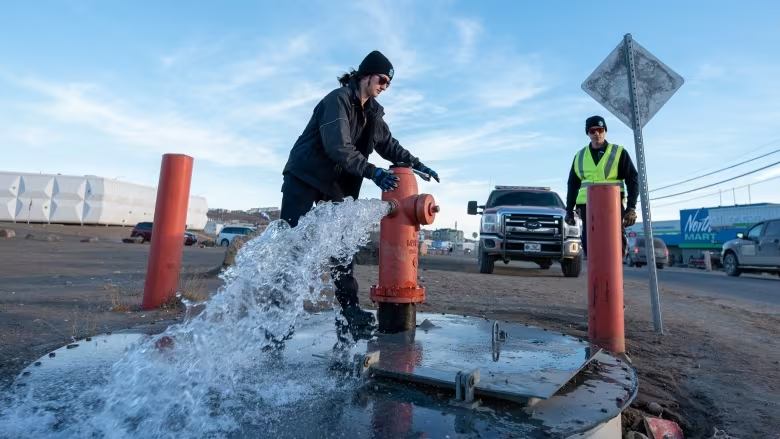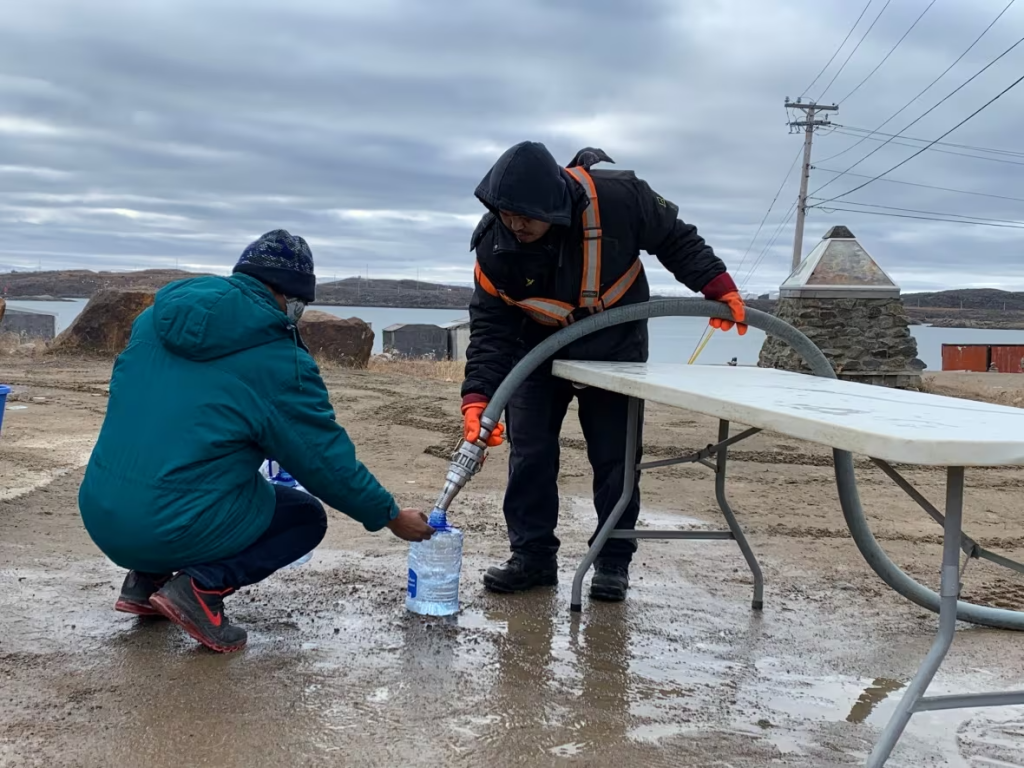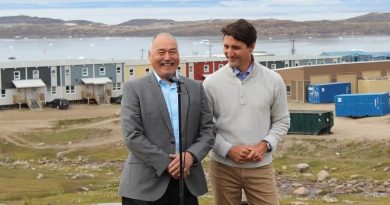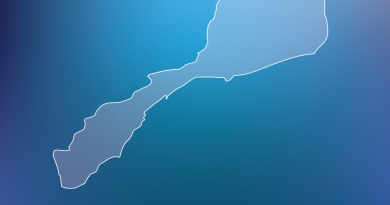Disagreements between city, territory slowed Iqaluit water crisis response: report

· CBC News
3rd-party report looked at 2021 crisis that left city residents without clean tap water for 2 months
A bypass system that allowed people in Iqaluit to drink the city’s tap water again after it was contaminated with fuel could have come online earlier, according to a report from a third-party review of the 2021 water crisis.
The report prepared by Toronto-based consulting firm DPRA for Nunavut’s Department of Community and Government Services (CGS) details how disagreements between the city and territorial government affected the response to the crisis. The report was issued in May and recently provided to CBC News by CGS.
City residents went nearly two months without clean tap water after hydrocarbons were detected in the city’s water supply in October 2021 and ultimately traced to the water treatment plant. A “do not consume” order from territorial health officials was ultimately lifted that December.
The consultant’s report says the City of Iqaluit commissioned its own design for a system that would bypass the contaminated water treatment plant after rejecting a design from CGS.
“Had the City and CGS been able to coordinate earlier on bypass design specifications, it is possible that construction on the bypass could have been underway in early November [2021],” the report reads.
The report says the city commissioned its own design “to meet certain technical specifications.”
“The City only appears to have evaluated the bypass design commissioned by CGS after [the Department of Health] mandated the bypass installation as a prerequisite to lifting the Do Not Consume advisory,” the report states.
At a November 2021 meeting, city officials expressed concerns with the CGS design, including around pressure and flow-related risk and the potential for long-term damage to the city’s piped infrastructure because of sediment.
“A second bypass design might have been unnecessary had the City granted CGS full access to the Iqaluit [water treatment plant]; or had the City conveyed its preferred bypass specifications to CGS earlier in the process,” the report says.
The bypass system came online in January 2022 and was used until earlier this year.

The report also says CGS spent a total of about $9 million on the water crisis, with $6.9 million going toward bottled water alone.
Between October and December 2021, more than 1.5 million litres of bottled water were procured and shipped to Iqaluit on 39 chartered flights.
The report also says CGS received a mobile water treatment plant that was purpose-built for the North prior to the water emergency, but it arrived damaged, was not properly winterized and was missing a generator.
CGS was also not provided with an operator’s manual for the mobile plant and CGS staff “lacked the specialist knowledge needed to overcome these challenges without expert assistance,” the report states.
Instead, the Canadian Armed Forces deployed its Joint Task Force North (JTFN) to set up a reverse osmosis water purification unit (ROWPU) in the Sylvia Grinnell River to deliver treated water to residents. That effort was referred to as Operation LENTUS.
“As the City’s support and cooperation was required to bring the ROWPU online, progress towards this objective stalled for several days following JTFN’s arrival in Iqaluit,” the report said.
“As a result of these differing risk assessments, the City perceived Operation LENTUS as an unnecessary distraction from remediation efforts at the Iqaluit [water treatment plant]. The City preferred, instead, to continue filling its water trucks at the Sylvia Grinnell River.”
‘Defensive approach’ to collaboration
The report says the city anticipated that the do-not-consume advisory could be lifted as soon as the end of October 2021, while the territory’s chief public health officer provided the city with a list of eight criteria that must be addressed before the order could be lifted.
It also says the city prioritized remediation efforts at the water treatment plant while the territory prioritized addressing short term needs by providing bottled water and producing treated water to residents.
“The City perceived these initiatives as having limited its autonomy to address the emergency. As a result of this perception, City staff appear to have adopted a cautious or defensive approach to collaborative efforts with CGS,” the report said.
Overall, the report found there was a lack of clarity around roles and responsibilities for those involved in the response.
“In spite of the resulting challenges, however, the community continued to function throughout this nine-week crisis,” the report said.
The report also said the city believed the risk of recontamination at the water treatment plant was low, while CGS and the Department of Health “believed the risk of recontamination was sufficiently high.”
“A shared understanding of the critical, complementary functions of the service provider (the City), regulator [Health], and facilitator or coordinator (CGS) could have prevented the delays which pushed the completion of the system to bypass the Iqaluit Water Treatment Plant all the way to January 2022,” the report said.
Winter conditions also contributed to difficulties with water delivery and storage, and supply chain issues that arose from the COVID-19 pandemic created issues for shipping materials to Iqaluit, the report found.
‘Lessons learned’
The consultant’s report makes seven recommendations to the territorial government and the city and cites several “lessons learned” from the water crisis.
No one from the city was available to comment on the review’s report on Wednesday. A letter from the city in response to the report says it does not dispute the recommendations.
A spokesperson for the Department of Health said it’s aware of CGS’s report and plans to review it to see what else is needed.
The report makes the following recommendations:
- Develop an updated territorial emergency management plan to include a risk-management framework.
- Amend territorial legislation to clarify emergency-response roles and responsibilities.
- Hold annual or biannual emergency-response training.
- Develop a mobile water treatment plant.
- Provide “onboarding” material to new government staff, explaining roles during emergency response.
- Maintain a roster of communications staff fluent in Nunavut’s official languages.
- Secure a heated storage facility for bottled water, water-treatment equipment, and water tanks.
Related stories from around the North:
Canada: Waterfalls now ‘trickling’: Low water brings changes to Hay River, N.W.T., CBC News



